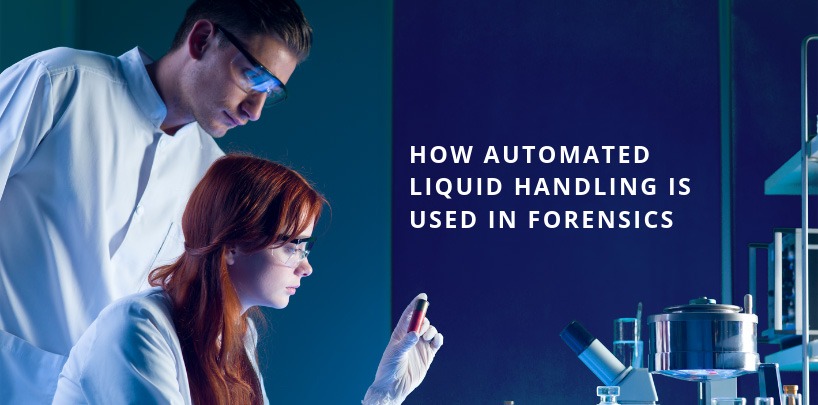
Automated liquid handling equipment sees applications across a wide range of industries. The field of forensics prominently uses various forms of liquid handling equipment, including DNA extraction and next-generation library sequencing equipment. Below, you’ll learn more about how forensic scientists use automated liquid handling. It allows them to reduce the backlog of untested sexual assault kits and perform more accurate DNA analysis in criminal investigations.
Sexual Assault Kit Processing
There are many factors which contribute to the excess of backlogged and untested sexual assault kits in the United States. The most prevalent reason for this backlog is the sheer volume and high demand for sexual assault kit testing in crime labs across the country. To better tend to the high volume of untested kits, many forensic science labs are turning to automated liquid handling equipment to expedite the process. This highly intelligent equipment uses a degradative agent to selectively separate sperm from non-sperm cells within a mixed sample. It automates the numerous wash, reduces the number of centrifugation steps and increases the sample processing capabilities to yield a higher number of samples per run. As such, automated liquid handling equipment can quickly process more untested sexual assault kits. Since this equipment allows for a higher efficiency and throughput rate, it also allows a forensic scientist to reallocate their skills. They will no longer need to worry themselves over the tedious tasks of centrifugation. In further proof of this equipment’s efficiency and reliability, a 2018 study from Oakland Police Department found that automated liquid handling equipment can produce sperm fractions with little to no epithelial cell carryover.
Next-Generation Sequencing
The history of DNA sequencing dates back hundreds of years and has applications across many scientific fields. In the forensics field, DNA sequencing has by massively parallel sequencing workflows, also known as next-generation library sequencing, is automated to significantly increase the throughput of DNA analyses. Using next-generation sequencing, forensic scientists can sequence short tandem repeat markers (STR) and single nucleotide polymorphisms (SNP) to aid in processing unsolved cases. Single nucleotide polymorphisms are the most common variation in a genome. However, the substitution of one nucleotide within a specific position in the genome marks them, so they can be difficult to identify. With the use of automated liquid handling equipment, however, scientists can better identify the single variations. Next-generation sequencing has also allowed for new capabilities, including ancestry and phenotype prediction as well as external characteristics predictions, such as eye color. This better aids in the identification of guilty parties, particularly within unsolved cases.
Drug Analysis
Forensic scientists use automated liquid handling not only in cases of sexual assault but also drug abuse. In cases of drug abuse, drug overdose, or reckless driving as a result of intoxication, forensic scientists must determine the type of drug consumed as well as the amount. In the past, forensic scientists often used liquid-liquid extraction for this process; however, solid-liquid extraction, also known as solid-phase extraction, has become increasingly common in recent years. Scientists commonly use liquid-liquid extraction in toxicology reports, such as urine and blood test, to great effect. However, solid-phase extraction, particularly when used in conjunction with automated liquid handling equipment, has proven highly efficient and reliable. According to a 2009 study by Matthew P. Juhascik and Amanda J. Jenkins, when compared with liquid-liquid extraction, solid-phase extraction proved to be faster. It was able to double the number of specimens extracted within a given time frame. Additionally, solid-phase extraction was able to detect certain drugs that liquid-liquid extraction was not, such as morphine, and was able to extract weakly acidic drugs in just one step. However, the science of forensics is not always so black and white, and solid-phase extraction may not be the best course of action for every analysis. Luckily, with the use of automated liquid handling equipment, liquid-liquid extractions can reach the same level of speed, efficiency, and reliability as solid-phase extractions.


